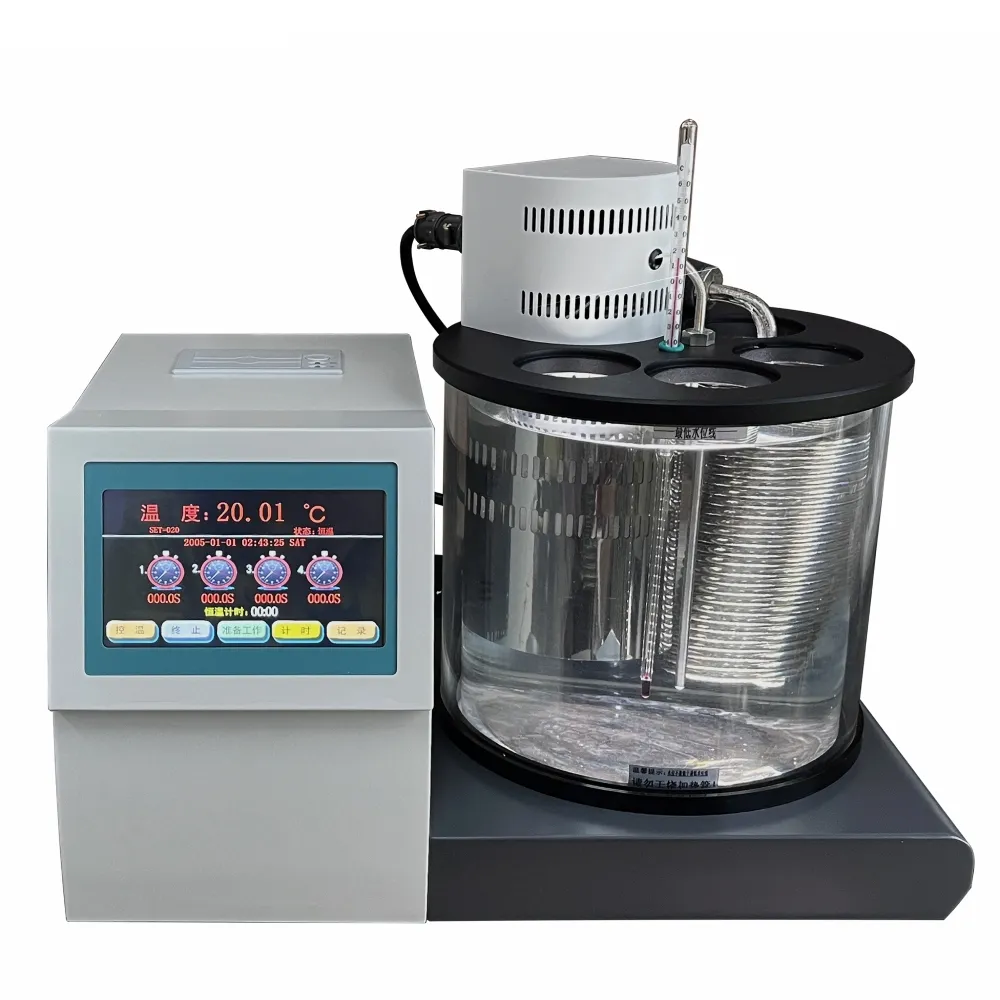TEL:
+86-0312-3189593
 English
English

Telephone:0312-3189593

Email:sales@oil-tester.com
2 月 . 13, 2025 03:41
Back to list
PUSH electrical astm d93 close cup flash point tester Silicon nitride ignition head
Effective oil testing in transformers is essential for ensuring their optimal performance, longevity, and reliability. Transformers play a critical role in power distribution, and their failure can lead to significant disruptions and costly repairs. Therefore, utilizing oil tests can preemptively identify potential issues, guaranteeing seamless operations.
Furan analysis stands out for its role in providing insights into the paper insulation's degradation. Transformers use cellulose-based paper for internal insulation, and furan compounds, formed during its breakdown, dissolve into the oil. By analyzing these compounds, operators can estimate the remaining life of the paper insulation, thus anticipating and averting untimely failures. Oxidation inhibitor testing is essential for oils containing antioxidants intended to prolong oil life. Testing these additives' concentration can reveal whether the oil is nearing the end of its efficiency, and addition or replacement might be needed. Professional expertise is vital in conducting these tests correctly and interpreting the results accurately. Engaging certified laboratories that adhere to international standards ensures reliable data, fostering timely and informed decision-making. Additionally, employing experienced technicians capable of conducting on-site evaluations complements laboratory analyses, offering a comprehensive assessment of the transformer's status. Data management is another sphere where expertise is essential. Using advanced software to track, record, and analyze historical oil test data provides trend analysis, helping predict future failures before they become critical issues. These insights allow maintenance teams to schedule proactive interventions rather than reactive repairs, significantly lowering operational costs and downtimes. Trustworthiness in the oil testing process hinges on transparency and adherence to recognized standards. Utilizing industry-standard methodologies such as those from the Institute of Electrical and Electronics Engineers (IEEE) or International Electrotechnical Commission (IEC) cultivates confidence in the results and subsequent recommendations. In conclusion, effective transformer oil testing is a blend of advanced techniques, expert analysis, and strategic insights. It provides a powerful protective measure for transformers, ensuring robust power distribution and reliable service. Consistent maintenance through oil testing not only anticipates potential breakdowns but also significantly extends the operational life of transformers, representing a cost-effective strategy for power system management. By prioritizing precision and expertise, organizations can safeguard their transformer assets, ensuring sustainable and uninterrupted energy provision.


Furan analysis stands out for its role in providing insights into the paper insulation's degradation. Transformers use cellulose-based paper for internal insulation, and furan compounds, formed during its breakdown, dissolve into the oil. By analyzing these compounds, operators can estimate the remaining life of the paper insulation, thus anticipating and averting untimely failures. Oxidation inhibitor testing is essential for oils containing antioxidants intended to prolong oil life. Testing these additives' concentration can reveal whether the oil is nearing the end of its efficiency, and addition or replacement might be needed. Professional expertise is vital in conducting these tests correctly and interpreting the results accurately. Engaging certified laboratories that adhere to international standards ensures reliable data, fostering timely and informed decision-making. Additionally, employing experienced technicians capable of conducting on-site evaluations complements laboratory analyses, offering a comprehensive assessment of the transformer's status. Data management is another sphere where expertise is essential. Using advanced software to track, record, and analyze historical oil test data provides trend analysis, helping predict future failures before they become critical issues. These insights allow maintenance teams to schedule proactive interventions rather than reactive repairs, significantly lowering operational costs and downtimes. Trustworthiness in the oil testing process hinges on transparency and adherence to recognized standards. Utilizing industry-standard methodologies such as those from the Institute of Electrical and Electronics Engineers (IEEE) or International Electrotechnical Commission (IEC) cultivates confidence in the results and subsequent recommendations. In conclusion, effective transformer oil testing is a blend of advanced techniques, expert analysis, and strategic insights. It provides a powerful protective measure for transformers, ensuring robust power distribution and reliable service. Consistent maintenance through oil testing not only anticipates potential breakdowns but also significantly extends the operational life of transformers, representing a cost-effective strategy for power system management. By prioritizing precision and expertise, organizations can safeguard their transformer assets, ensuring sustainable and uninterrupted energy provision.
Latest news
-
Differences between open cup flash point tester and closed cup flash point testerNewsOct.31,2024
-
The Reliable Load Tap ChangerNewsOct.23,2024
-
The Essential Guide to Hipot TestersNewsOct.23,2024
-
The Digital Insulation TesterNewsOct.23,2024
-
The Best Earth Loop Impedance Tester for SaleNewsOct.23,2024
-
Tan Delta Tester--The Essential Tool for Electrical Insulation TestingNewsOct.23,2024





